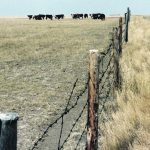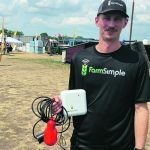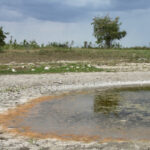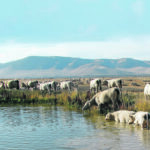Tag Archives water quality — page 2

Sask. auditor urges WSA to finalize water, wetland policies

Watch water quality this summer
Low winter snowfall, low rainfall, heat and water use all play a role in heightening producers’ concern for dugout quality
Glacier FarmMedia – On the Canadian Prairies, a green Christmas doesn’t exist. However, a brown Christmas sure did in 2023, thanks to El Niño. Snow was scarce on the Prairies earlier this winter, with temperatures rarely falling below -20 C, or even -10 C. With a drought stretching through multiple years, the dry winter is […] Read more
Man. pasture prices may be underestimated
Nailing down an ‘average’ value for pastureland can be difficult because some pastures are desirable and some are not
WINNIPEG — A recent report from Farm Credit Canada suggests that pastureland in Manitoba is valued at $500 to $700 per acre, on average. Those estimates seem low to Ben Hamm, farm management specialist with Manitoba Agriculture. Hamm, who raises cattle in southeastern Manitoba, said land prices in his region are much higher than $500 […] Read more
Monitor gives producers more flexibility

Herd health, economics based on water quality
A former livestock specialist says insufficient water intake reduces an animal’s performance faster than any other nutrient deficiency
Water comprises 50 to 80 percent of an animal’s live weight and insufficient intake reduces performance faster than any other nutrient deficiency.
Polio symptoms linked to high sulphate levels
Sulphate toxicity is one of the leading causes of polio encephalomalacia, which can be prevented by testing water quality
Symptoms of polio encephalomalacia (PEM) include progressive blindness, difficulty walking, depression and seizures in cattle.
Keep close eye on blue-green algae this summer
Heavy blooms appear as a solid shimmering blue-green sheen across the dugout water’s surface with a “pea soup” quality
Often called blue-green algae, cyanobacteria produce toxins that can cause liver damage, gastroenteritis and even death if ingested by livestock.
Poor water quality linked to sulfate levels
Cattle producers urged to test dugouts this summer due to low water levels resulting from a shortage of snow last winter
This summer, testing water might become a necessity for livestock producers. Hundreds of dugouts across the eastern Prairies are half-full of water, or nearly empty, because of minimal snowfall this winter. When dugouts and other water sources are low, water quality usually drops. “If they (producers) are looking at lower levels… that can sneak up […] Read more
Drought worsens water woes
Water is cattle’s most important nutrient, but quality can be inconsistent during exceptionally dry years
When water sources dry up and cattle are wading into the mud of a dugout, it can be unhealthy for both cattle and the water source. Even if cattle are not allowed into the pond or dugout, a diminishing water supply may contain concentrated salts and toxic substances that could put cattle health at risk. […] Read more



